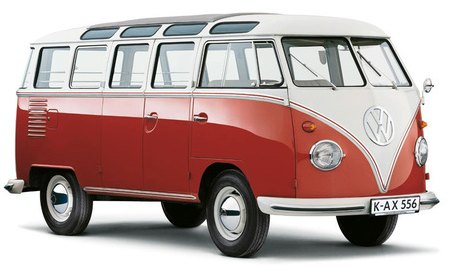CARS , AUTOPARTS , CAR FACTS , REPAIR HELP , PICKUP , INDUSTRIAL AUTOMOTIVE , AUTO DEALERS , AUTO REGULATIONS , AUTO THEFT , INSURANCE , CPN ADVERTS , AUTO EQUIPMENTS , SPORTS , Post Auto Jobs , Service Request ,
Throwback Cars: Volkwagen Type 2 review - Update by
Josey
17:04:pm On
Thu 22 2016
The Volkswagen Type 2, known officially (depending on body type) as the Transporter, Kombi or Microbus, or, informally, as the Bus (US) or Camper (UK), is a forward control panel van introduced in 1950 by the German automaker Volkswagen as its second car model. Following – and initially deriving from Volkswagen's first model, the Type 1 (Beetle) – it was given the factory designation Type 2.
Also Called
Volkswagen Bus
Volkswagen Camper
Volkswagen Delivery Van
Volkswagen Kombi
Volkswagen Microbus
Volkswagen Pick-up
Volkswagen Transporter
Volkswagen Van
Production
Nov 1949 - Dec 2013
Wheelbase 2,400 mm (94.5 in)
Length 4,280 mm (168.5 in)
Width 1,720 mm (67.7 in)
Height 1,940 mm (76.4 in)
The Type 2 was available as a:
Panel van, a delivery van without side windows or rear seats.
Double-door Panel Van, a delivery van without side windows or rear seats and cargo doors on both sides.
High Roof Panel Van (German: Hochdach), a delivery van with raised roof.
Kombi, from German: Kombinationskraftwagen (combination motor vehicle), with side windows and removable rear seats, both a passenger and a cargo vehicle combined. Bus, also called a Volkswagen Caravelle, a van with more comfortable interior reminiscent of passenger cars since the third generation.
Lotação (share-taxi), a version exclusive to Brazil, with 6 front-hinged doors for the passenger area and 4 bench-seats, catering to the supplemental public transport segment.
Available from 1960 to 1989, in both the split-window and "clipper" (fitted with the bay-window front panel) bodystyles.
Samba-Bus, a van with skylight windows and cloth sunroof, first generation only, also known as a Deluxe Microbus. They were marketed for touring the Alps.
Flatbed pickup truck, or Single Cab, also available with wider load bed.
Crew cab pick-up, a flatbed truck with extended cab and two rows of seats, also called a Doka, from German: Doppelkabine.
Westfalia camping van, "Westy", with Westfalia roof and interior. Included optional "pop up" top.
Adventurewagen camping van, with high roof and camping units from Adventurewagen.
Semi-camping van that can also still be used as a passenger car and transporter, sacrificing some camping comforts. "Multivan" or "Weekender", available from the third generation on.
Apart from these factory variants, there were a multitude of third-party conversions available, some of which were offered through Volkswagen dealers. They included, but were not limited to, refrigerated vans, hearses, ambulances, police vans, fire engines and ladder trucks, and camping van conversions by companies other than Westfalia. There were even 30 Klv 20 rail-going draisines built for Deutsche Bundesbahn in 1955.
In South Africa, it is known as a well-loved variation of the ice cream van (first, second and third generations). The mere sight of one (in South Africa) sparks the familiar rhyme: I scream, We scream, We all scream for Ice-Cream!

Comments
No More Comments.....
Please post your comments